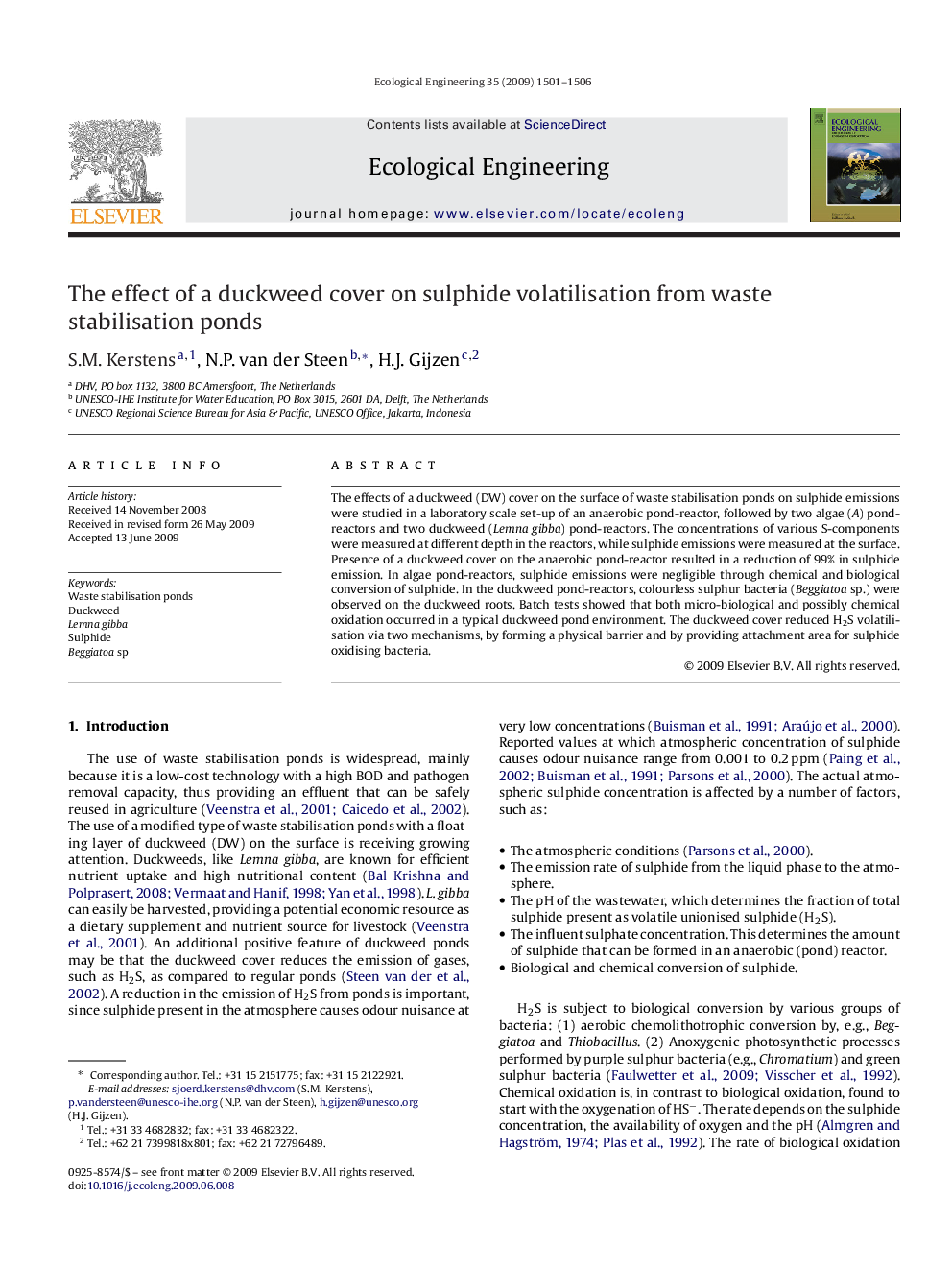| Article ID | Journal | Published Year | Pages | File Type |
|---|---|---|---|---|
| 4390727 | Ecological Engineering | 2009 | 6 Pages |
The effects of a duckweed (DW) cover on the surface of waste stabilisation ponds on sulphide emissions were studied in a laboratory scale set-up of an anaerobic pond-reactor, followed by two algae (A) pond-reactors and two duckweed (Lemna gibba) pond-reactors. The concentrations of various S-components were measured at different depth in the reactors, while sulphide emissions were measured at the surface. Presence of a duckweed cover on the anaerobic pond-reactor resulted in a reduction of 99% in sulphide emission. In algae pond-reactors, sulphide emissions were negligible through chemical and biological conversion of sulphide. In the duckweed pond-reactors, colourless sulphur bacteria (Beggiatoa sp.) were observed on the duckweed roots. Batch tests showed that both micro-biological and possibly chemical oxidation occurred in a typical duckweed pond environment. The duckweed cover reduced H2S volatilisation via two mechanisms, by forming a physical barrier and by providing attachment area for sulphide oxidising bacteria.
